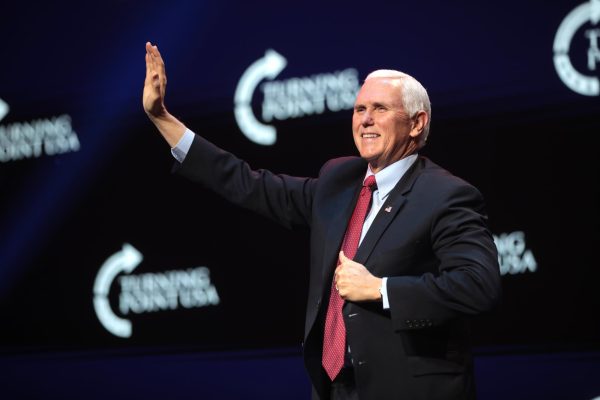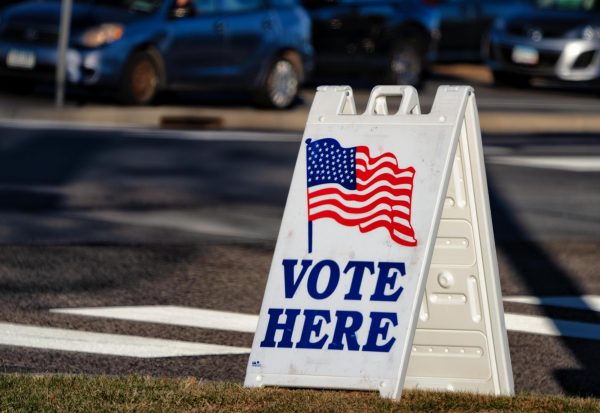OPINION: In addition to easing debt, raise the minimum wage for students
The COVID-19 pandemic and the draconian curbs required to stop the spread have wrought economic devastation across the U.S. on a scale not witnessed since the Great Depression. Many businesses have been ordered shuttered, with some having to close permanently. Tens of millions of Americans are at risk of losing their homes as eviction moratoriums are expected to expire later this year as the outbreak wanes. Massive stimulus packages have helped ease the pain but will further increase the U.S. national debt, triggering impacts that will be felt for years to come. But amidst this turmoil lies opportunity. There has never been a better time to implement long-overdue economic reforms that will pay dividends long after the virus is gone.
While comprehensive reform would benefit Americans of all ages and races, one demographic is especially critical. This group has so many needs yet so little time or money. This group works, on average, more than nine-to-five office employees yet earns so much less. This group defines the future of the nation’s workforce yet their economic position would have you believe otherwise.
And that group is college students. This sector of the population faces a 40% poverty rate, with one in three students also housing or food insecure. Perhaps most shockingly, nearly 1 in 10 are completely homeless. The desperation and uncertainty are direct symptoms of a student loan debt crisis that has cost the U.S. $1.71 trillion and counting and snarled millions of young adults’ quests for financial independence. College is widely regarded as the only easy ticket to high-paying jobs, yet high costs of attendance make this pathway much, much harder.
To fix this problem, all college students, regardless of whether they work on campus or off campus, must earn a $15 per hour minimum wage–and higher if they can prove low-enough income or other familial hardship. The money would come directly from wealthy taxpayers. In return, millions of students would possibly be lifted out of poverty and go on to graduate and become productive members of society, ultimately benefiting the economy in the long term.
Canceling $10,000 of student loan debt is another key tenet of lifting students out of poverty. A popular misconception holds that debt forgiveness would disproportionately benefit those from more prestigious schools as those have greater price tags. While it is true that about two-thirds of all debt is owed by those with at least $100,000 outstanding, a cohort that has mostly high-paying jobs, these basic statistics do not tell the full story.
Analysis of debt-to-income ratios paints a much clearer picture of the situation. A write-off of $10,000, as Biden suggested in lieu of $50,000, would benefit millions of low-income borrowers. They comprise the largest cohort of debtors, yet collectively owe a disportionately low share of the loans. In other words, this more modest cancelation of student debt would net a much higher return on investment than $50,000 or more.
However, this does little to help those currently in college, who often struggle to cover day-to-day expenses like groceries and rent. The rise of the federal minimum wage has long been outpaced by that of average college tuition fees, which have surged from $1,410 in 1971 to $22,180 in 2020 for public institutions, or 1,473%. By contrast, the baseline hourly pay has only ticked up 353%, from $1.60 to $7.25. If a student earns $9.40, the average of the state minimum wages, they would have to work an average of 40 hours per week for the entire year to cover the costs of tuition, room and board, and other basic necessities. Lower student incomes are directly correlated with longer working hours, which are in turn directly correlated with lower academic achievement and increased prevalence of mental health issues.
Radical action to address the mounting crisis is more urgent than it has ever been—not just due to sky-high college fees, but also the ongoing COVID-19 pandemic. At least 13.3 million undergraduates, or two in three, have expressed serious concerns over their financial future, according to a survey by WalletHub. A similar proportion—7 in 10—feel that the pandemic has made it harder to obtain employment. And they are right: expert assessments of the current jobs market reveal stark similarities to that of the Great Depression. To add insult to injury, many colleges have refused to discount tuition for online classes and moved forward with annual hikes, prompting nationwide lawsuits. Complicating the situation is that colleges themselves are stuck between a rock and a hard place due to declining enrollment, with some closing permanently.
To ensure that institutions do not lose further funds, the money to help pay college workers should come directly from taxpayers. Biden is expected to eventually raise income taxes on Americans earning greater than $400,000 annually, which he is currently planning on using for a multi-trillion-dollar infrastructure project but could and should eventually direct some of the funds to higher education. That way, colleges would not have to significantly raise their own costs to pay their student workers $15 per hour, which would ultimately defeat the purpose and create an inequality gap between employed and unemployed students. All of that money would come from the wealthy elite.
The only sound plan to put the college poverty crisis to bed is to cancel some loan debt and pay college workers at least $15 per hour and preferably more. While a nationwide increase to $15 would cause an estimated 1.4 million job losses by 2025 due to heightened operational costs and outsourcing, the costs of applying the hike to just students would be far less. They would comprise one half of the U.S. workforce earning wages under $15 per hour provided all of them were employed AND made less than $15. In exchange for the limited jobs burden, graduation rates could increase significantly and more Bachelor’s and Master’s-level positions would be filled, a likely net gain for the economy.
A likely net gain for the economy? All the more appealing during the greatest downturn since the Depression. Let’s help our students right now.












